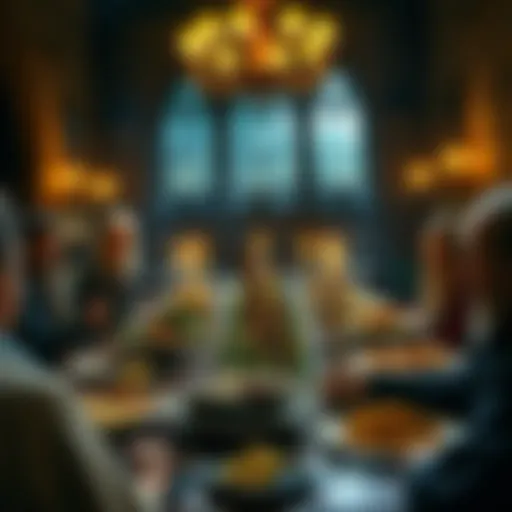Exploring the Haunting Essence of AHS: New Orleans
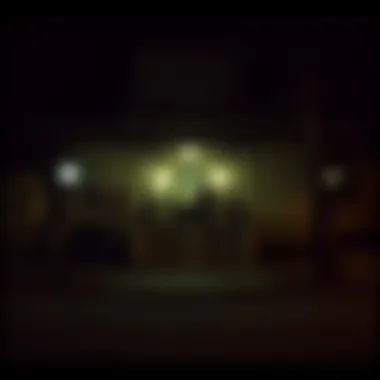
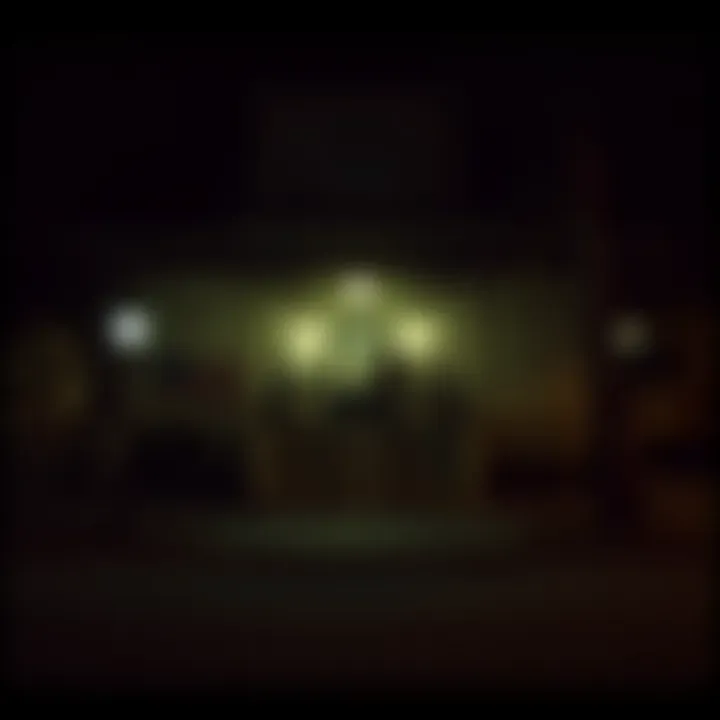
Intro
In the realm of horror television, American Horror Story stands out as a bold exploration of fear and the unknown. The segment set in New Orleans offers an intricate tapestry woven from local folklore, historical events, and the supernatural, wrapping viewers in its chilling embrace. This chapter is not just another terrifying tale; it’s a deep dive into society's shadows, cleverly presented through the lens of one of America’s most vibrant cities and its rich cultural history.
New Orleans is a city that breathes life into myths and markers of distress alike. Southern Gothic aesthetics abound here, and American Horror Story: New Orleans harnesses this energy, spinning stories that echo historical injustices while probing into the very nature of evil. As we peel back the layers, the series invites reflection on themes of identity, power, and morality, examining how they manifest when combined with the supernatural.
This article aims to dissect these themes, character arcs, and the broader cultural significance that this season encapsulates within the horror genre. Let's embark on this journey to unravel what makes AHS: New Orleans so compelling and how it reverberates through pop culture today. With a mix of vivid character studies and social commentary, it shines a spotlight on how horror can serve as a reflection of societal fears and truths.
Prelude to American Horror Story
The world of American Horror Story has captivated audiences since its debut, presenting a myriad of dark and complex narratives. In this article, we delve into the significance of the series, particularly focusing on the New Orleans season. Not only does it provide a unique perspective within the anthology series, it also showcases the intricacies of horror storytelling in a culturally rich backdrop. Understanding American Horror Story helps unravel the intricate layers of its narratives and character developments.
Overview of the Anthology Series
American Horror Story stands out in the television landscape as a groundbreaking anthology series. Each season introduces a new storyline, populated by a mix of familiar and fresh faces, all interconnected by thematic elements of the grotesque and the unsettling. The innovative storytelling approach allows the audience to experience horror from different angles, making each season a standalone yet cohesive piece within the larger framework of the show.
New Orleans, with its vibrant history and spectral lurking beneath the surface, becomes a haunting stage for this chapter. This season, simply termed Coven, spins a haunting yarn weaving together elements of witchcraft, loyalty, and betrayal, all steeped in the rich cultural history of one of America's oldest cities. The characters and supernatural events present a gripping tale that speaks volumes about American Horror Story's ability to tap into diverse cultural narratives. Each season fosters a unique exploration of fear, offering fans a fresh taste of terror and intrigue.
Significance of Setting in Horror
The setting is akin to a silent character in horror narratives, casting its shadow over stories and enveloping them in ambiance. In American Horror Story: New Orleans, the city is not merely a backdrop but a vibrant participant in the narrative, adding depth and eeriness to every scene. New Orleans, steeped in voodoo practices and haunted by its complex history, serves as a canvas for the series’ themes.
- Cultural Context: The city’s rich blend of Latin, African, and French cultures creates a diverse palette for creating horror that feels alive and deeply rooted. The folklore, haunting jazz music, and vivid street scenes contribute to an atmosphere that foregrounds fear and fascination in equal measure.
- Historical Roots: The echoes of history - from the trials of the first witches to the age of slavery - haunt the narrative, adding layers of socio-political commentary that are vital for comprehending dread.
- Visual Aesthetic: The architecture, with its crumbling façades and wrought-iron balconies, forms an essential part of the locale’s allure, frequently filtered through a lens that captures the unsettling beauty of decay.
Each layer of setting in American Horror Story’s New Orleans shapes the storytelling, elevating mundane fears into haunting realities.
The Allure of New Orleans
When it comes to horror, the setting plays a pivotal role in the storytelling, shaping not just the atmosphere but also influencing the narrative's core themes. New Orleans, with its rich tapestry of culture, history, and lore, stands as an ideal backdrop for an anthology like American Horror Story, particularly its New Orleans season. The city isn't just a place; it's a character in its own right, steeped in shades of melancholy and mystique. This section explores how the allure of New Orleans enhances the series, providing depth to its themes and a haunting tone to its narratives.
Cultural Heritage and History
New Orleans, often dubbed "The Big Easy," is a city where every street corner tells a story. Its roots run deep into the fabric of American history, blending French, Spanish, African, and Creole influences. This cultural melange manifests in its architecture, cuisine, and, particularly relevant to American Horror Story, its traditions and belief systems.
Among its most striking characteristics is the city's connection to voodoo. This powerful spiritual practice, grounded in West African beliefs, intertwines with Christianity, creating a unique religious landscape often overlooked in mainstream narratives. Such themes echo throughout AHS: New Orleans, illuminating the tension between ecclesiastical aspirations and traditional spiritual practices. Characters like Marie Laveau, portrayed as a prominent figure in the series, draw directly from historical and mythical figures, enriching the storyline.
Moreover, the city's history of hauntings and ghost stories adds another layer to its allure. Places like the LaLaurie Mansion, infamous for its dark past, become pivotal in the series, weaving real history with fiction. By placing the story in a historically rich context, the creators invite viewers not just to watch but to reflect on the implications of this history in today’s social framework, particularly regarding race and class.
Mysterious Folklore and Legends
New Orleans also thrives on an eclectic mix of folklore and legends that serve as an endless reservoir of inspiration for stories laden with suspense and horror. One can't discuss New Orleans folklore without touching upon its legendary figures, such as the ghost of the pirate Jean Lafitte, reputed to roam the waters and remains a symbol of the city’s storied past.
The AHS: New Orleans season capitalizes on these ancient tales, blurring the lines between reality and fiction, reinforcing the idea that the past never truly fades. The series taps into local superstitions, drawing viewers into a world where death and the supernatural coexist with the lively day-to-day essence of the Crescent City. For instance, the story of the Loup Garou—a werewolf-like creature native to the region—adds a layer of primal fear that resonates throughout the season.
Furthermore, the concepts of hauntings and spirits hold significant weight in New Orleans. The annual celebrations of Mardi Gras, famously vibrant and extravagant, directly contrast with the shadowy aspects of life and the dead that the locals openly acknowledge. This duality—celebration alongside an acknowledgment of death—creates a particularly conducive atmosphere for horror, showcased brilliantly in American Horror Story: New Orleans.
"The road to the soul runs through the cemetery; the living and the dead intertwine in ways the uninvited cannot see."
In summary, New Orleans is not just a backdrop but a complex character that deeply influences American Horror Story: New Orleans. The city's rich cultural heritage and unsettling folklore provide a well of inspiration that elevates the narrative, drawing viewers into a haunting world where every ghost, legend, and tradition matters. This unique essence is not just decorative; it is integral to our understanding of the horror genre and reinforces the thematic depth of the anthology.
Character Analysis
Character analysis is crucial in understanding American Horror Story: New Orleans, as it unravels the complex relationships and motivations that dwell within its narrative. The character arc often represents broader themes, igniting sparks of reflection about societal norms, expectations, and fears. This section digs deep into the protagonists and antagonists, as well as the archetypes that illustrate the series’ overarching messages. By examining these components, we can appreciate how deeply personal narratives intertwine with cultural critiques, all while ensuring viewers remain captivated by the haunting appeal of the story.
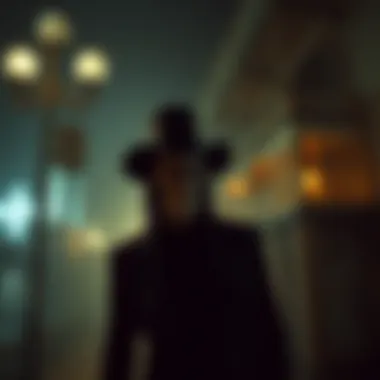
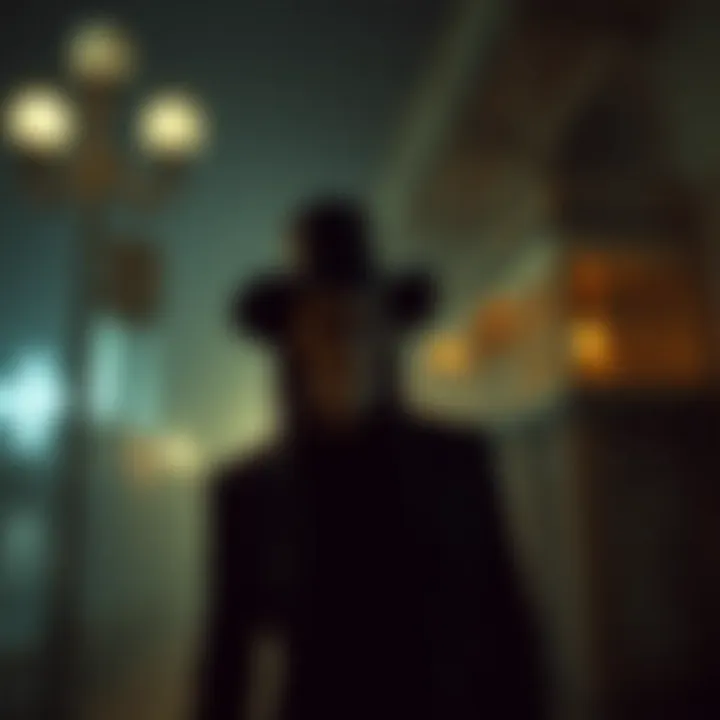
Protagonists and Antagonists
The protagonists of New Orleans embody the struggle against immense odds, often facing not only external forces but their own internal turmoil. Take for example the character of Voodoo queen Marie Laveau, a formidable figure who stands as both a protector of her community and an antagonist to those who threaten it. Portrayed by Angela Bassett, her character deftly balances allure and menace, creating an unforgettable presence on screen.
Conversely, Delphine LaLaurie, played by Kathy Bates, embodies the historical horror that resonates with audiences. As a character that is both a protagonist and an antagonist, she represents the lingering specter of America's past racial violences. Her interactions reveal the series’ commentary on guilt, punishment, and the consequences of one's actions over time. These characters are not merely good or evil; they exist in a morally gray realm that invites viewers to question their own understandings of humanity.
This intricate interplay between protagonists and antagonists serves a dual purpose. It brings tension to the narrative while also drawing viewers deeper into the cultural and historical realities of New Orleans. Characters like Tate Langdon from earlier seasons re-emerge, making connections that enrich the viewer experience.
"Characters in horror are not just vessels for frights; they are reflections of our collective anxieties and aspirations."
Archetypes within the Story
Diving further, the archetypes presented in the series offer layers of meaning that resonate throughout American Horror Story: New Orleans. The configurations of these archetypes—such as the Jester, the Sage, and the Hero—reflect age-old storytelling principles that echo through modern storytelling channels.
For instance, the Goddess archetype is prominently represented by Marie Laveau, portraying strength and resilience. In contrast, the Shadow archetype is embodied by characters like Delphine, showcasing destructive tendencies and prejudices. By naming these archetypes, the series taps into a universal understanding of human nature, allowing viewers to relate personally.
The roles characters play often transcend their immediate actions; they become symbols of broader societal issues. The Victim archetype is intriguingly presented through characters like Madison Montgomery, whose struggles highlight modern dilemmas related to female empowerment and oppression.
Themes Explored in the Series
The themes explored in American Horror Story: New Orleans are not just a decorative layer but serve as the backbone of its haunting narrative. From its supernatural elements to the pressing social issues it brings to light, each theme crafts a vivid tale that resonates with viewers on multiple levels.
While horror typically invites audiences to confront their fears, this installment takes it a step further by dissecting the complexities of human relationships against the backdrop of New Orleans' rich and gory history. Understanding these themes helps one appreciate why this particular season stands out, revealing mind-bending realities about society that often lie beneath the surface.
Supernatural Elements
Supernatural elements in American Horror Story: New Orleans become a vehicle for exploring deeper truths about humanity. These manifestations create an atmosphere where the impossible becomes possible, and it allows the narrative to stretch beyond realism. Ghosts, witches, and even voodoo serve as allegories for personal contention, making viewers grapple with what it means to be haunted—be it by memory, guilt, or unseen societal pressures. In the same vein, the series frames the supernatural as a catalyst for the characters' evolutions. Characters’ interactions with supernatural forces bring forth reflections on their mortality and moral choices, urging the audience to ask themselves, "What haunts me?"
"In horror, what you can't see is often scarier than what you can." Much of the series utilizes the unseen to evoke dread, constructing a world where the threat lurks just out of sight yet is palpably felt.
Social Issues and Commentary
The exploration of social issues within the series adds another poignant layer to its narrative fabric. The production does not shy away from confronting sensitive matters, sparking important dialogues long after the screen fades to black.
Race Relations
The aspect of race relations is intricately woven throughout the narrative. New Orleans, with its diverse cultural tapestry, serves as a fitting backdrop for examining racial tensions. The show dives into this critical subject by showcasing historical injustices that resonate within contemporary society. Delving into the complexity of racial dynamics empowers the audience to confront lingering prejudices and understand how deeply entrenched systemic inequalities shape individual lives.
A key characteristic of these portrayals is the focus on community resilience in the face of adversity, illustrating that despite oppressive forces, strength can bloom from shared pain. Highlighting both the horrors and heroism found in the struggle for equality allows for a beneficial examination of identity and the reckoning with the past.
Gender Dynamics
On the other hand, the exploration of gender dynamics poignantly reflects the ongoing discourse around societal roles and expectations. The show portrays women in multifaceted roles, not just as victims but as empowered agents of change—or destruction. This characteristic enhances viewer engagement, as it allows them to examine gender norms and the balance of power within relationships.
By featuring strong female characters who navigate their own personal demons alongside supernatural forces, the series becomes a stage for discussions around feminism in modern horror. The unique feature of American Horror Story: New Orleans lies in its refusal to adhere strictly to genre conventions, opting instead to raise questions about where gender intersects with fear.
Thus, while the series is undoubtedly rooted in horror, its narrative choices introduce compelling questions about humanity, making it easier for audiences to relate and reflect. This thematic richness and depth contribute heavily to the overall impact and lasting relevance of the series within the horror genre.
By interlacing supernatural elements with critical social commentary, American Horror Story: New Orleans invites viewers to peel back the layers of horror to reveal uncomfortable truths about society, making it a significant cultural touchstone.
Visual and Aesthetic Style
The visual and aesthetic style of any television series plays a significant role in shaping audience perception and engagement. In the realm of horror, this is even more profound. American Horror Story: New Orleans utilizes its aesthetic elements to reflect the eerie undertones of the narrative and to immerse viewers into a world thick with unease and fascination. The look and feel of the show not only enhances its storytelling but also serves as a conduit for the cultural themes embedded within the New Orleans setting.
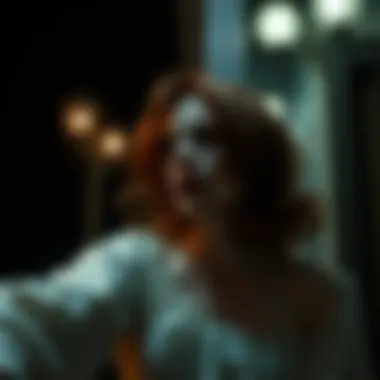
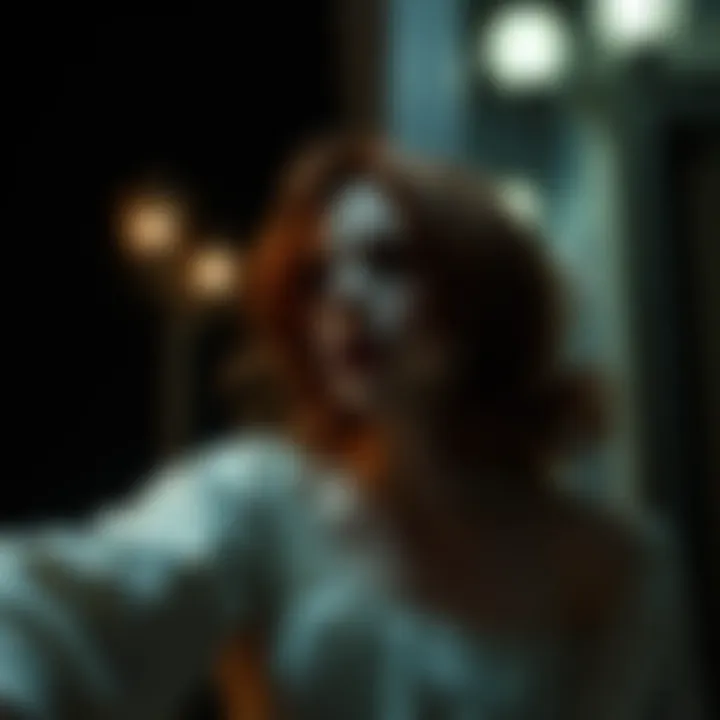
Cinematography and Set Design
The cinematography in American Horror Story: New Orleans is nothing short of striking. Each frame is crafted with an artist's touch, where shadows dance alongside flickering lights, creating an atmosphere that oscillates between beauty and horror. The use of wide-angle shots reveals the vast, haunting architecture of New Orleans, while close-ups often capture the raw emotions of its characters. These choices are deliberate, inviting viewers to experience both the grandeur and the grotesqueness of the city.
The set design contributes significantly to this unique aesthetic. Locations evoke the history of the city while simultaneously manifesting the supernatural elements intrinsic to the series. The dark, opulent interiors of ancient mansions juxtaposed against the lively yet shadowy streets infuse the story with a duality that mirrors the complexities of its characters. Both the living and the spirits inhabit these spaces, enhancing the interconnectivity of life, death, and the heritage of voodoo that runs deep in the veins of New Orleans. This engagement with the setting amplifies the claustrophobic feel, re-emphasizing that the past is never truly forgotten.
"The visuals become a character in their own right, guiding the narrative and reflecting the psyches of those entwined in the story."
Color Palettes and Symbolism
Color plays a pivotal role in crafting the mood of American Horror Story: New Orleans. The series employs a rich palette dominated by deep purples, greens, blacks, and golds. These colors do not merely add to the aesthetic; they are symbolic tones that echo the deeper themes of the show. For instance, green often signifies supernatural power, linking back to the essence of voodoo, while darker shades evoke fear and the unknown.
Symbolism extends beyond colors into various motifs present throughout the series. Imagery related to death—skulls, graves, and masks—proliferate in the visuals. This consistent representation ties back to the city’s history with death rituals and celebrations, such as Mardi Gras, which intertwines with the essence of life and mortality. It hints that every horror has roots in history, suggesting that the characters—living or dead—are part of a larger narrative that extends beyond their personal stories.
Impact on Pop Culture
The "American Horror Story: New Orleans" segment of the anthology series has made a significant mark on popular culture. It's not just a show that delivers suspense and thrill, but it also stitches itself into the fabric of contemporary discussions surrounding horror narratives. By anchoring its storyline in New Orleans, a city teeming with history and folklore, it taps into a rich vein of cultural heritage. This series has transformed how horror is perceived, particularly in a modern context, influencing not only films and television shows but also spawning conversations in various cultural outlets.
Crossover Impact in Other Genres
The influence of "American Horror Story: New Orleans" extends beyond the horror genre alone. This series has a knack for blending different styles, drawing elements from drama, comedy, and even reality TV. Shows in similar veins have started to incorporate darker elements, propelled by the magnetic storytelling found in AHS. You can see these changes in series like "The Haunting of Hill House," where psychological drama intermingles with supernatural horror.
- Examples of crossover elements include:
- Dark Humor: Many shows now weave in humor amidst horror, a technique The AHS series uses effectively. This contrast keeps the audience engaged while instilling an eerie surprise.
- Character Complexity: Inspired by AHS, newer shows often focus on character arcs that traverse multiple genres, propelling beyond typical hero versus villain tropes.
These shifts illustrate how "American Horror Story: New Orleans" has encouraged the exploration of narrative structures that allow storytelling to straddle various genres instead of just anchoring solely in horror. What's more, films that were once purely about scares now add emotional depth due to the evolution of character portrayal seen in AHS.
Merchandising and Fan Culture
The fervor surrounding "American Horror Story: New Orleans" extends to merchandising and fan communities as well. The rich visual aesthetic partnered with engaging characters sparked a variety of products that fans eagerly snatch up. From collectible figures to themed apparel, the merchandising strategy is an extension of the show’s deep-seated cultural impact.
- Types of Merchandise:
- Figures and Statues: Collectible items represent key characters and iconic moments, which fans proudly showcase on shelves.
- Apparel: T-shirts, hoodies, and accessories adorned with quotes or imagery from the series attract a dedicated fanbase.
Fan culture also thrives around themed events and gatherings, where enthusiasts exchange theories and delve deeper into the show's lore. Platforms like Reddit see bustling forums where fans dissect episodes, create fan art, and speculate about future plotlines, fostering a vibrant community unified by their love for the series. This interaction not only elevates the viewing experience but also solidifies "American Horror Story: New Orleans" as not just a show, but a cultural phenomenon that invites ongoing dialogue and participation.
"The whole New Orleans segment serves as a rich tapestry, allowing fans to engage with both the narrative and its broader cultural implications."
Through its compelling portrayal of characters, cultural intricacies, and innovative narrative structures, "American Horror Story: New Orleans" has not only captivated audiences but also left an indelible mark on pop culture itself.
Critical Reception
The critical reception of American Horror Story: New Orleans serves as a vital barometer for understanding its place within not only horror television but also contemporary culture. This section dives into how the show has been received, highlighting both the praise and the criticisms it has garnered. The significance of the audience and critical response cannot be understated; they inform future storytelling, inspire production changes, and enhance or detract from a show's legacy. In an age where horror often grapples with the complexities of societal issues, the reception of this season showcases how well it resonates—or fails to—within a diverse cultural framework.
Positive Reviews and Accolades
American Horror Story: New Orleans has received a good share of positive reviews. Critics have praised it for significant elements such as strong character development, the vivid imagery used throughout, and, of course, the captivating setting of New Orleans. The performances of key actors, particularly those portraying witches and the supernatural beings, have been a focal point for acclaim. For instance, Sarah Paulson's portrayal drew admiration for its depth, breathing life into her character’s conflicts and emotional struggles.
Additionally, several critics have highlighted the rich narrative tapestry this season weaves. According to a review from Entertainment Weekly, "the season manages to blend horror with a deep dive into the known yet arcane cultural history of New Orleans, creating a chilling atmosphere that also informs the character's motivations".
The accolades reflect this success:
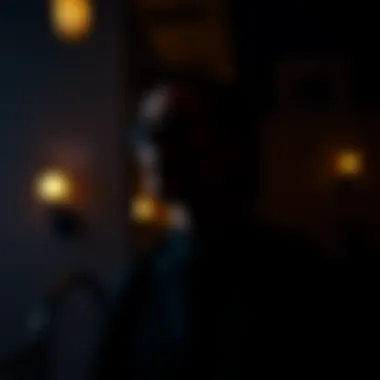
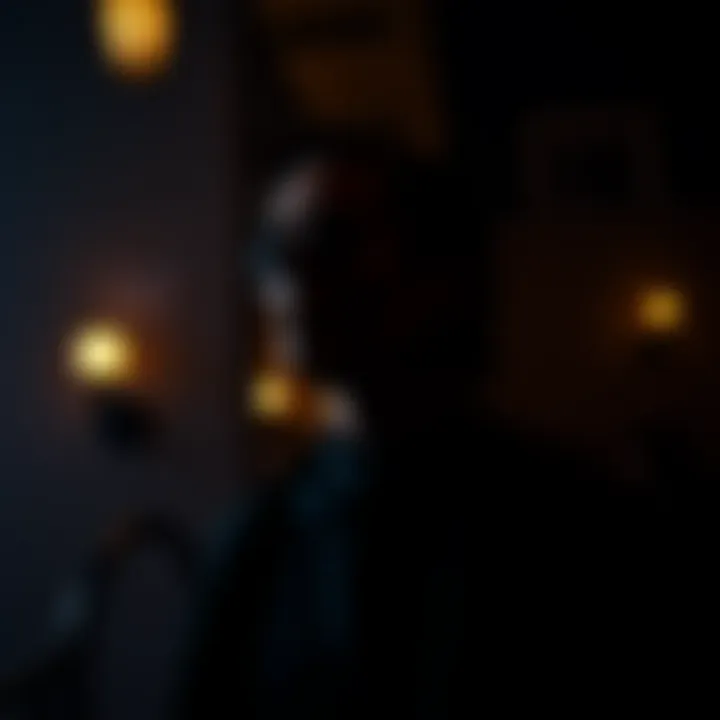
- Nominated for multiple Primetime Emmy Awards.
- Won the Critic’s Choice Super Awards for Best Horror Series.
- Featured prominently in several end-of-the-year best-of lists, often cited as a standout season of the anthology.
This positive reception should not be dismissed; it exemplifies how a well-crafted horror series can tackle deeper themes while still delivering the scares that captivated the audience from the get-go.
Criticism and Controversies
However, no piece of art is without its fair share of detractors. American Horror Story: New Orleans has faced criticism on various fronts that merit discussion. Some viewers have pointed to pacing issues within the season, noting that certain storylines felt overextended or hastily bundled toward the conclusion.
Critics, too, have pointed fingers at how some storylines seemed to borrow heavily from existing folklore without providing the necessary depth or originality. This has led to allegations that the series might be appropriating cultural elements rather than authentically representing them. For example, some reviewers at The Verge mentioned, "while the supernatural elements add excitement, some folklore themes could have been explored with more sensitivity, respecting the actual historical context."
Controversies often arise from the blending of horror with real social issues, as seen in critiques regarding the portrayal of race and the historical implications of witchcraft narratives. The dialogues surrounding these topics can incite passionate discussions, making it clear that while the season might thrill some, it also raises valid concerns.
Overall, navigating the complexities of critical responses underscores an essential element of horror storytelling—its ability to evoke strong reactions, be they positive or negative. As American Horror Story: New Orleans continues to stir conversations, it remains an important subject in discussions of how modern horror engages with real-world issues.
"A well-crafted horror not only entertains but also challenges its audience to reflect on the darker corners of society."
For further reading, consider visiting Britannica or Wikipedia, where you can find additional insights into the entire series and its cultural impact.
Comparative Analysis with Other Seasons
In the vast landscape of American Horror Story, each season presents its own distinct flavor while occasionally intertwining motifs and elements shared across the anthology. It’s essential to engage in a comparative analysis to unearth the layers that make New Orleans stand out amidst its peers. The city serves as a character itself, steeped in history and steeped in the supernatural, bringing forth a unique atmosphere that sets it apart from other installments.
Distinct Elements of New Orleans
American Horror Story: New Orleans brings a rich tapestry of cultural identity, one that is both vibrant and haunting. The intricate architecture of the French Quarter, with its wrought-iron balconies and lush gardens, sets a gothic stage that is unlike the sterile hallways of a haunted asylum or the oppressive silence of a witch's coven. The show immerses viewers into a world where jazz fills the air, blending with whispers of voodoo and the legacy of past tragedies.
Some distinct elements that emerge specifically in this season include:
- Voodoo and Spirituality: The exploration of voodoo practices and its mixed-reception among locals showcases the internal struggles of the characters. It provides depth and authenticity that other seasons may lack.
- Historical Context: Not only does this season feature fictional supernatural beings, but it also laces in real historical figures and events that enrich its narrative. Even the portrayal of Madame LaLaurie showcases both horror and redemption.
- Cultural Festivals: The backdrop of Mardi Gras introduces a chaotic and celebratory atmosphere, becoming a powerful metaphor for the duality of human nature—festivity juxtaposed with lurking dread.
Recurrent Themes Across Seasons
While each season boasts its own unique storylines, certain themes recur throughout the series, resonating deeply with audiences. In light of New Orleans, several of these themes are amplified through the city's rich culture:
- Isolation vs. Community: Characters experience profound loneliness, often reflecting the isolation found in urban settings. Yet, the intertwined lives of the New Orleans denizens showcase a complex web of community, frequently challenged by external and supernatural forces.
- Confrontation with Death: American Horror Story regularly wrestles with death, and in New Orleans, themes of resurrection and the afterlife are particularly poignant. The handling of mortality is not only horrific; it also evokes a sense of existential contemplation.
- Morality and Consequences: Characters struggle with their past actions and the consequences that follow. The inner conflict between good and evil unfolds in multifaceted ways, ultimately divesting standard horror tropes in favor of nuanced moral dilemmas.
Engaging with these elements of comparison reveals how American Horror Story: New Orleans not only stands alone in its chilling narratives but also engages with wider discussions established across the series. This exploration of both distinct local offerings and recurring thematic connections offers a comprehensive understanding of the anthology as a whole.
End
Reflecting on the impact of American Horror Story: New Orleans reveals a rich tapestry of storytelling that weaves together horror, history, and the human experience. The conclusion serves not just as a summary but as a crucial point of reflection on the deep-seated influence the series has had on the horror genre and pop culture at large. It encapsulates the essence of New Orleans—the vibrant yet eerie backdrop that enhances the narrative's complexities.
Legacy of American Horror Story: New Orleans
The New Orleans season is a standout installment within the American Horror Story series. It has left an indelible mark on both fans and critics alike. The portrayal of voodoo culture, intertwined with themes of power, race, and mortality, paints a haunting yet enlightening picture.
Moreover, this chapter has shifted the conversation within the horror genre, introducing audiences to characters that are far from one-dimensional. The complexity of figures like Marie Laveau and the balance of good versus evil provide layers to the narrative that are not only entertaining but thought-provoking.
Legacy here is measured in how it carves a niche in popular culture—a distinct reminder that horror can be both reflective and transformative. New Orleans, with its ghosts both literal and figurative, stands as a testament to a legacy that challenges viewers to explore the unknown yet familiar.
Future of the Series
The future of American Horror Story remains shrouded in suspense, much like the tales it tells. As the series progresses, the challenge lies in maintaining this delicate balance between innovation and tradition. Given the show's history of reinventing itself, fans can expect upcoming seasons to continue to push narrative boundaries.
Themes of cultural unrest, supernatural phenomena, and the intricate web of human relationships will likely be at the forefront. There's a sense that the series has yet to fully explore the haunting history of America; it can continue to delve deeper into social issues and histories that resonate today.
The challenge will be to capture the lightning in a bottle that New Orleans did.
Engagement with contemporary issues, including racial dynamics and gender identities, can provide fertile ground for new narratives. Maybe there are stories yet untold that can inspire the next victim of its chilling tales. The unique style and potent storytelling ensure that American Horror Story will keep its audience engaged and guessing.



